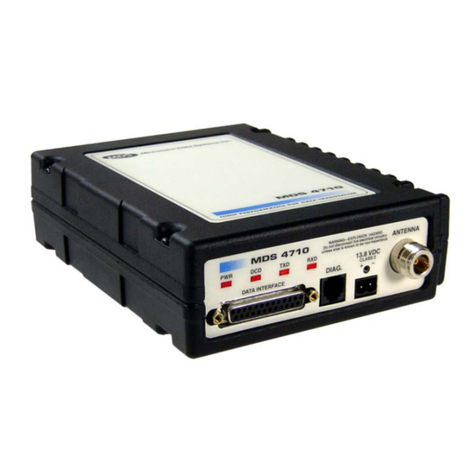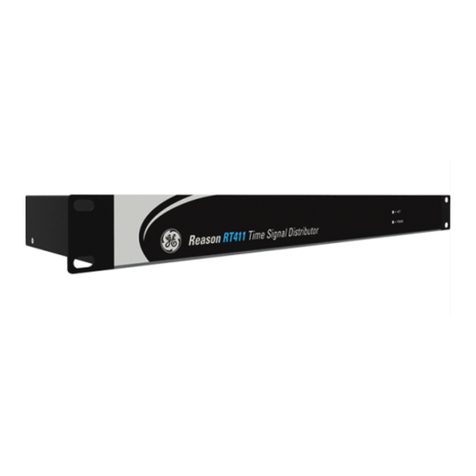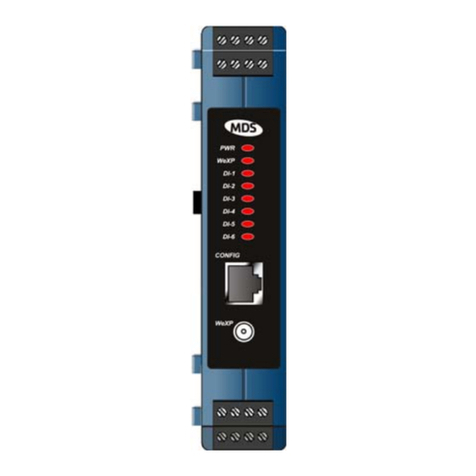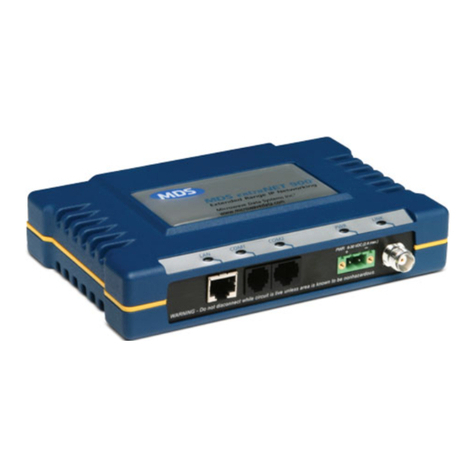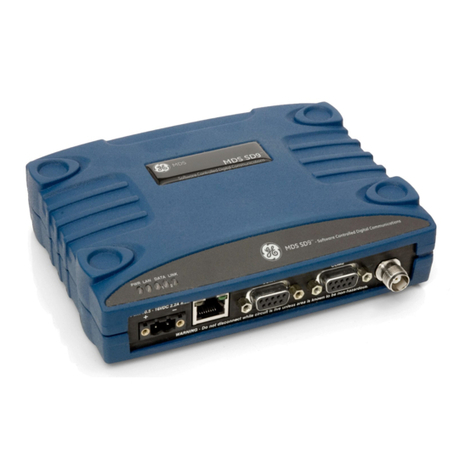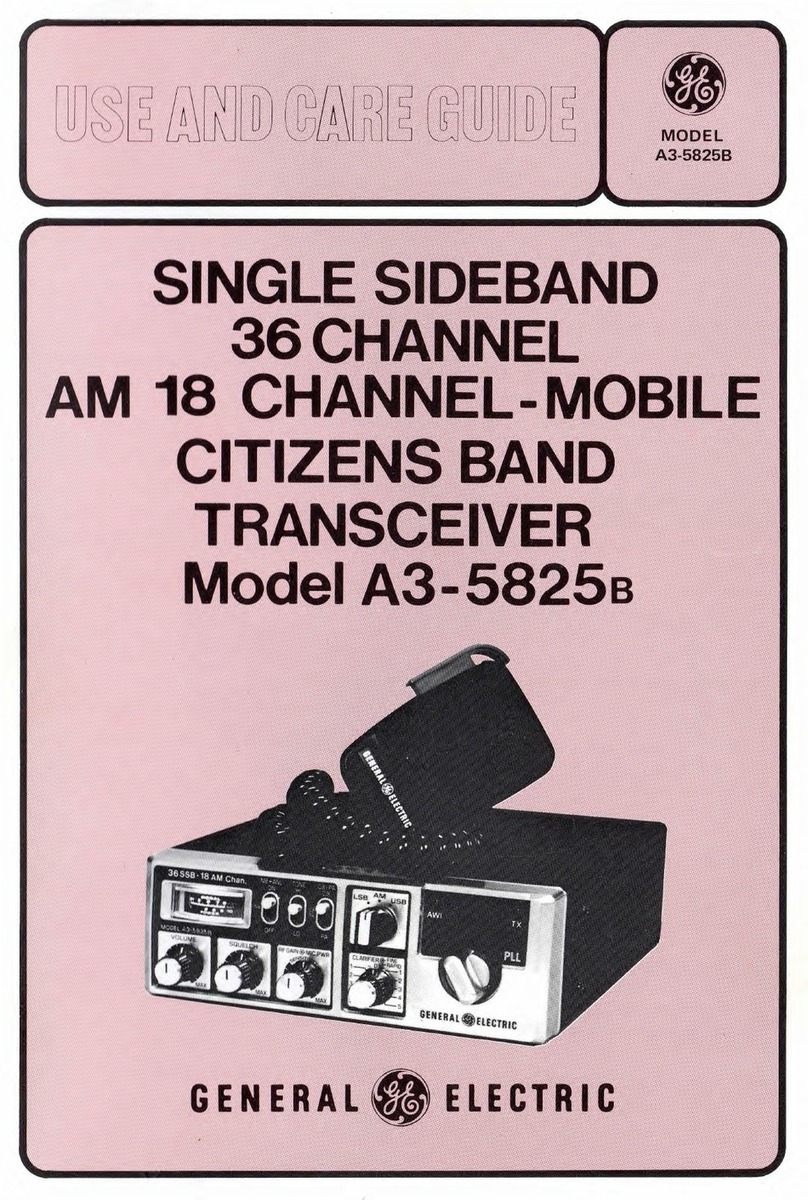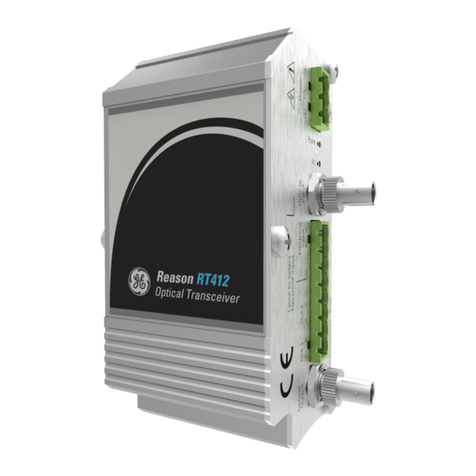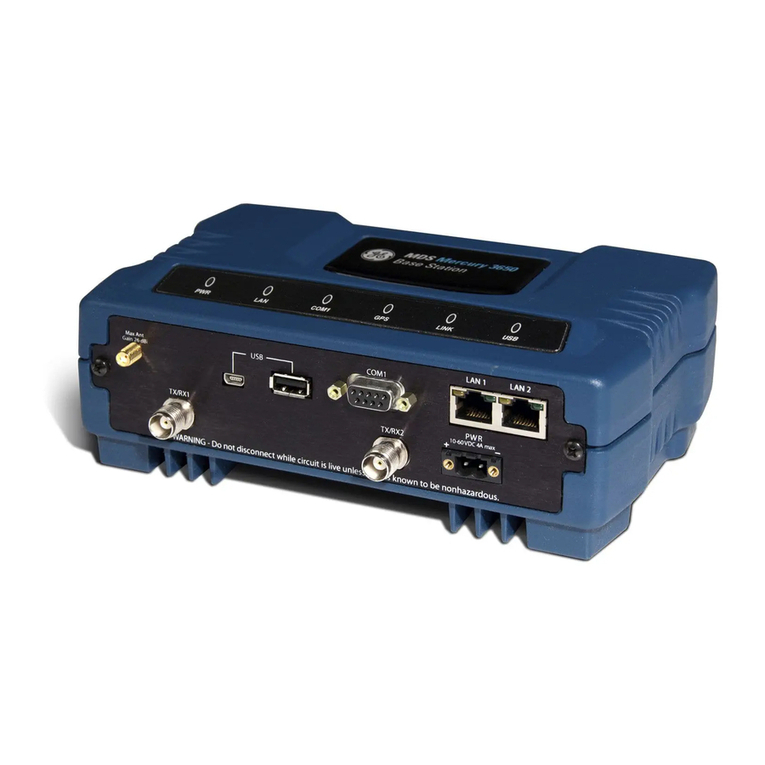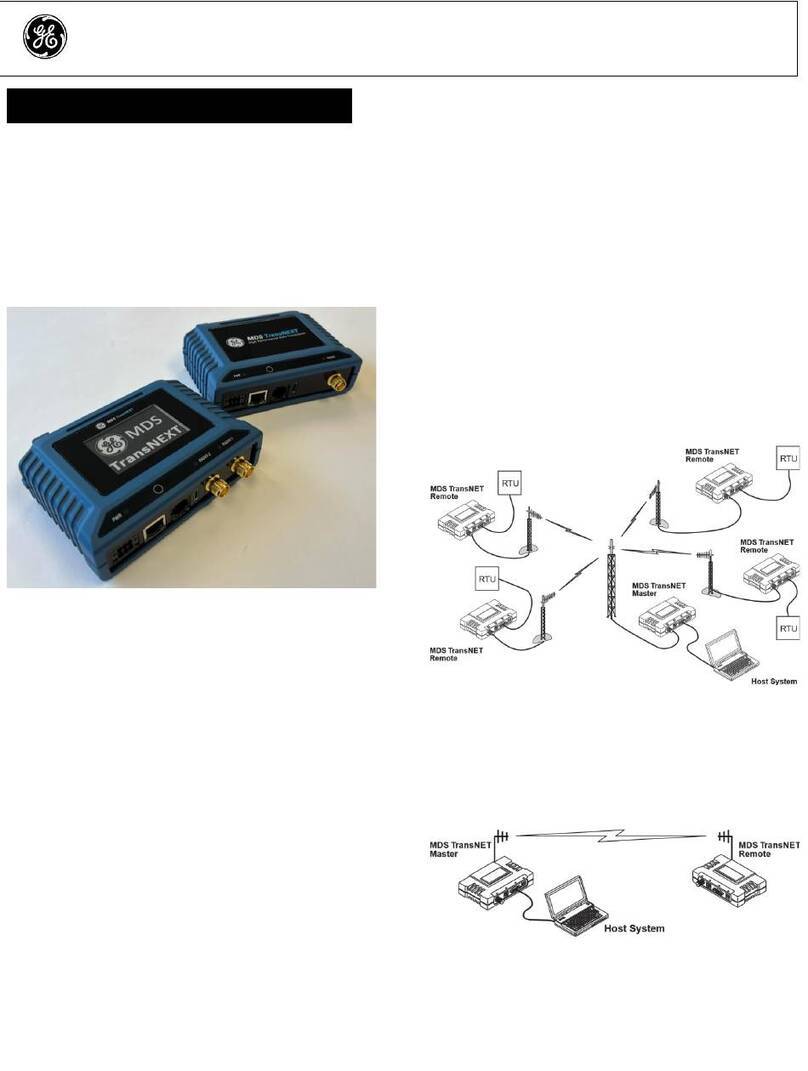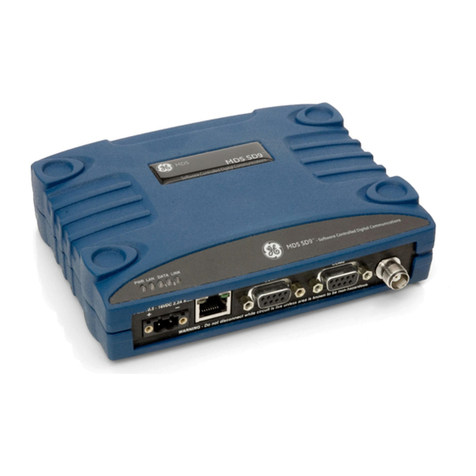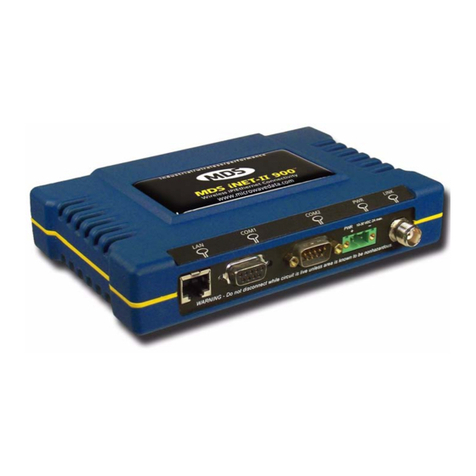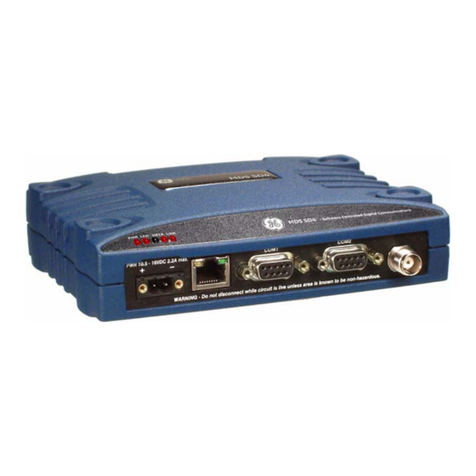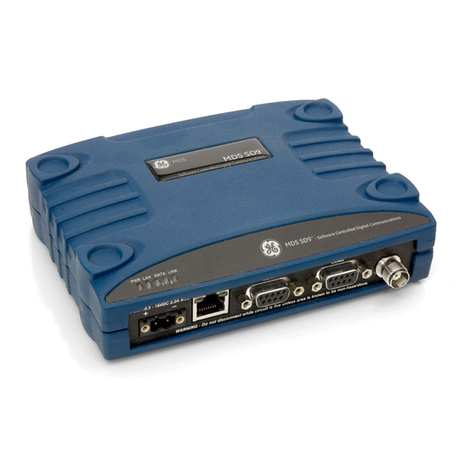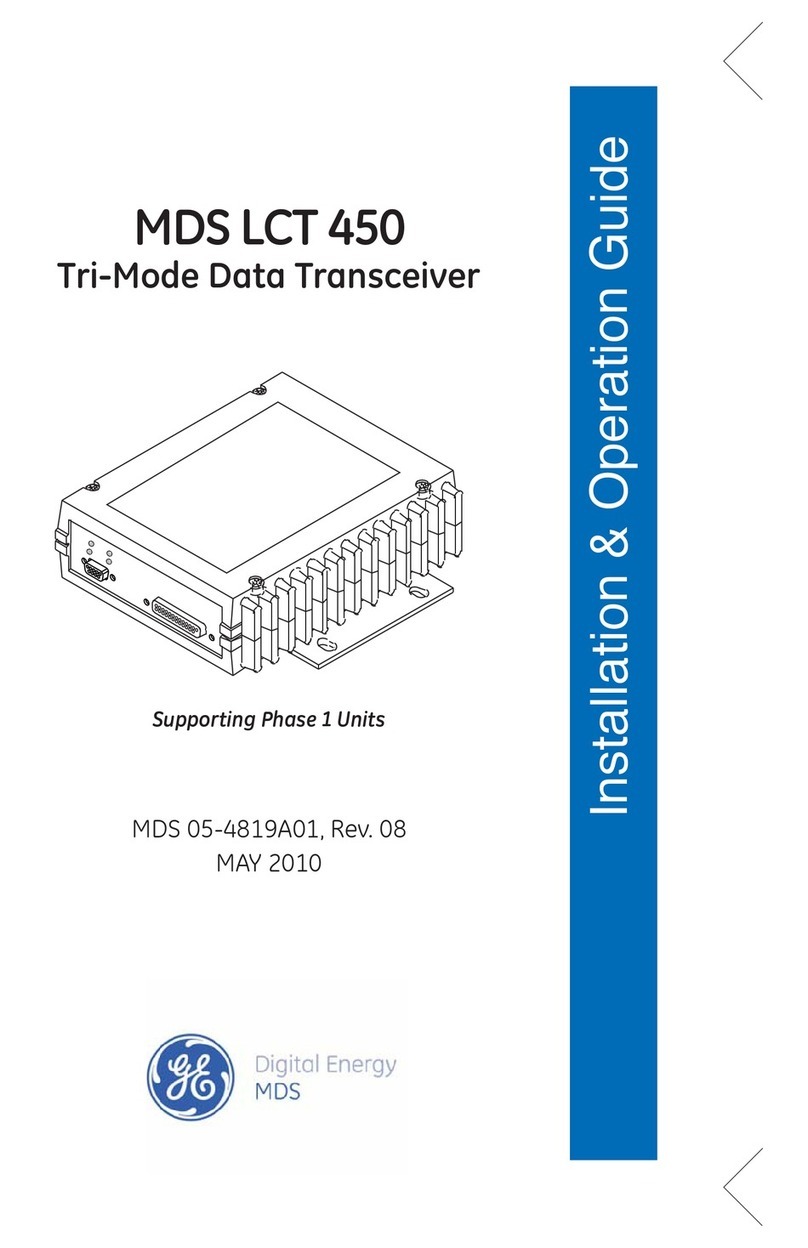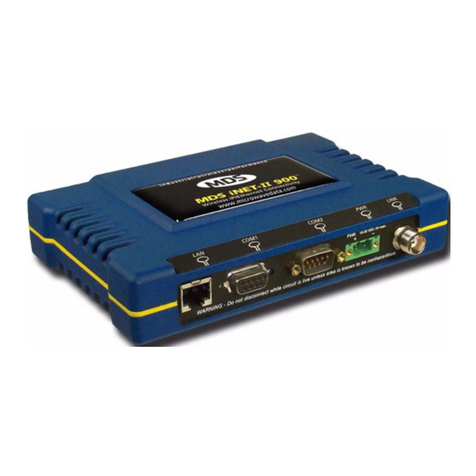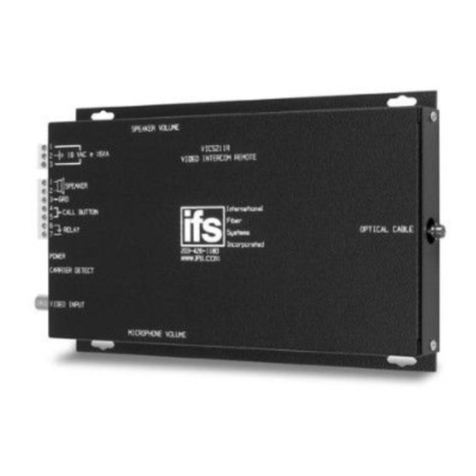
viii MDS TransNET Ref. Manual MDS 05-2708A01, Rev. F
The transceiver has been recognized for use in these hazardous locations by two independent
agencies —UnderwritersLaboratories (UL) and the Canadian Standards Association (CSA). The
UL certification for the transceiver is as a Recognized Component for use in these hazardous
locations, in accordance with UL Standard 1604, UL508. The CSA Certification is in accordance
with CSA STD C22.2 No. 213-M1987.
UL/CSA Conditions of Approval: The transceiver is not acceptable as a stand-alone unit for use
in the hazardous locations described above. It must either be mounted within another piece of
equipment which is certified for hazardous locations, or installed within guidelines, or conditions
of approval, as set forth by the approving agencies. These conditions of approval are as follows:
1. The transceiver must be mounted within a separate enclosure which is suitable for the
intended application.
2. The coaxial antenna cable, power input cable and interface cables must be routed through
conduit in accordance with Division 2 wiring methods as specified in the National Electrical
Code, Article 501.4(B).
3. The transceiver must be used within its Recognized “Ratings”.
4. Installation, operation and maintenance of the transceiver should be in accordance with the
transceiver's installation manual, and the National Electrical Code.
5. Tampering or replacement with non-factory components may adversely affect the safe use of
the transceiver in hazardous locations, and may void the approval.
6. A power connector with screw-type retaining screws as supplied by MDS must be used.
When installed in a Class I, Div. 2, Groups A, B, C or D hazardous location, observe the fol-
lowing: WARNING —EXPLOSION HAZARD Do not disconnect equipment unless power
has been switched off or the area is know to be non-hazardous.
Refer to Articles 500 through 502 of the National Electrical Code (NFPA 70) for further infor-
mation on hazardous locations and approved Division 2 wiring methods.
FCC Part 15 Approval Notice
The products described comply with Part 15 of the FCC Rules. Operation is subject to the fol-
lowing two conditions: (1) this device may not cause harmful interference, and (2) this device
must accept any interference received, including interference that may cause undesired opera-
tion. This device is specifically designed to be used under Section 15.247 of the FCC Rules and
Regulations. Any unauthorized modification or changes to this device without the express
approval of the manufacturer may void the user’s authority to operate this device. Furthermore,
this device is intended to be used only when installed in accordance with the instructions outlined
in this manual. Failure to comply with these instructions may void the user’s authority to operate
this device.
Industry Canada Notice
This Class A digital apparatus complies with Canadian ICES-003.
Cet appareil numérique de la classe A est conforme à la norme NMB-003 du Canada.
Servicing Precautions
Whenservicing energizedequipment, besure towearappropriate PersonalProtective Equipment
(PPE). During internal service, situations could arise where objects accidentally contact or short
circuit components and the appropriate PPE would alleviate or decrease the severity of potential
injury. When servicing radios, all workplace regulations and other applicable standards for live
electrical work should be followed to ensure personal safety. All service must be performed by
qualified personnel.
Manual Revision and Accuracy
While every reasonable effort has been made to ensure the accuracy of this manual, product
improvements may result in minor differences between the manual and the product shipped to
you. If you have additional questions or need an exact specification for a product, please contact
our Technical Services team using the information at the back of this guide. In addition, manual
updates can often be found online at www.gemds.com.
